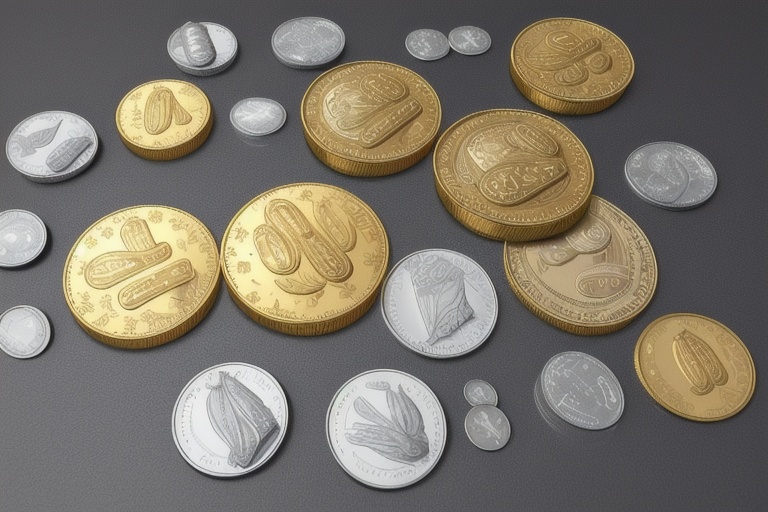Coin collecting is a pursuit that marries the thrill of the hunt with the meticulous attention to detail required for valuing subtle differences in condition. Coin grade, a key determinant of a coin's value, is influenced by factors such as wear, luster, and overall eye appeal. This guide will delve into the nuances of coin grading and help collectors understand the system used to assess and value these precious artifacts.
Coin collecting is a pursuit that marries the thrill of the hunt with the meticulous attention to detail required for valuing subtle differences in condition. Coin grade, a key determinant of a coin's value, is influenced by factors such as wear, luster, and overall eye appeal. This guide will delve into the nuances of coin grading and help collectors understand the system used to assess and value these precious artifacts.
Understanding Coin Grading
The grade of a coin is a shorthand expression of its condition, which directly influences its value. Coin grading employs a scale that takes into account various levels of preservation and wear. This scale ranges from the heavily worn to the flawlessly minted.
Circulated coins have passed through commerce and bear the marks of their journey. Their grading starts at "Good" (G) — the lowest collectible grade where major designs are visible but worn — and progresses through "Very Good" (VG), "Fine" (F), "Very Fine" (VF), and up to "Extremely Fine" (EF). Each grade signifies a step up in detail and sharpness of the coin's design, as wear from circulation diminishes.
Uncirculated coins, having never been used in commerce, begin at the MS-60 (Mint State-60) level, showing no trace of wear but possibly exhibiting contact marks or a lack of luster. From MS-60, the grade increases to the pinnacle of perfection — MS-70 — indicating a coin without blemish under five times magnification.
The Special Case of Proof Coins
A special mention must be made of proof coins, which are collector items in their own right. Created using polished dies and blanks, they are struck multiple times to achieve a remarkable level of detail and a mirror-like finish. Proof coins are assigned their own grading scale (PR or PF), with the same numerical ratings as uncirculated coins, yet the standards for proof condition are notably more stringent due to their specially manufactured nature.
Graded Coins and the Market
Understanding the grading scale has a practical aspect: it can help you predict the market value of a coin more accurately. Graded coins, especially those on the higher end of the scale — like a near-flawless MS-69 or a perfect MS-70 — often fetch higher prices. Certain coins in EF or AU (About Uncirculated) condition can also command premiums if they belong to a sought-after series or possess historical significance.
Building a Collection with Grades in Mind
Collectors may choose to focus on a particular grade or series, amassing coins in a "Fine" state, for instance, or striving for an "Extra Fine" Roosevelt dime series. On the other hand, some collectors enjoy the variety and aim to represent an entire spectrum of grades within their collection. Whichever your preference, a well-rounded understanding of the grading system will aid in building a collection that is both meaningful and potentially valuable.
Navigating the Grading Landscape
Navigating coin grades can be daunting, especially for newer collectors. Reliable grading standards, such as those established by the Professional Coin Grading Service (PCGS) or the Numismatic Guaranty Corporation (NGC), are invaluable resources. Moreover, developing a discerning eye for grading nuances is a skill honed over time, through experience and exposure to a wide array of coins.
Whether you are a seasoned numismatist or a newcomer, the marketplace offers opportunities to acquire graded coins that can enhance your collection. Consulting with experienced dealers, attending coin shows, and partaking in auctions are ways to engage with the hobby and apply your growing grading acumen.
Conclusion
Grading is at the heart of numismatics and requires a practiced eye to discern the fine distinctions between levels of preservation. From assessing the wear of circulated coins to admiring the pristine surfaces of proof and uncirculated specimens, each grade tells a story of a coin's history and its journey through time.
Collectors are encouraged to immerse themselves in the world of grading, seeking out educational resources and guidance from seasoned professionals. A nuanced understanding of the grading system is a powerful tool, unlocking the potential to build a collection that is rich in history, beauty, and value.
We hope this exploration of coin grading aids you in your numismatic pursuits. Remember, whether you are collecting for pleasure, profit, or a bit of both, understanding the grade of a coin is key to appreciating its true worth and place in the grand tapestry of coinage. Happy collecting, and may your efforts be rewarded with treasures that resonate with historical significance and numismatic splendor.
Information for this article was gathered from the following source.


